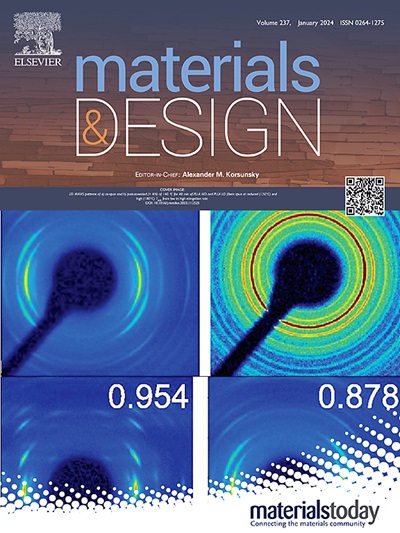Superlubricity enabled by graphene nanocomposite film on carbon-coated AISI 1045 steel
IF 7.6
2区 材料科学
Q1 MATERIALS SCIENCE, MULTIDISCIPLINARY
引用次数: 0
Abstract
This paper presents a low-cost and innovative method for treating high temperature biowaste to create an ultra-low friction carbon-based coating on AISI 1045 steel. Utilizing carbon from Manihot esculenta biowaste, graphene variants were deposited on substrates at 500 °C and 900 °C. The microstructure and mechanical/tribological properties were studied pre- and post-treatment. These include Vickers hardness and wear characteristics that were measured with a ball-on-disk wear tester. Increasing treatment temperature and time resulted in high substrate hardness. The graphene variants were characterized using Raman spectroscopy with discernible trends D and G band trends. The I2D/IG and ID/IG intensity ratios varied as the treatment conditions changed. Electron backscatter diffraction, X-ray diffraction, optical, scanning electron, and atomic force microscopy provided insights into phases and microstructural features. Tribological tests showed remarkable ∼95.20 % reduction with a superlubricious coefficient of friction of ∼0.0015 and ∼88 % decreased wear rate for substrates treated for 5 h at 900 °C. The graphene platelet and multiwalled defective structures on the substrates transformed into graphene oxide and graphene nanocrystals providing the needed solid lubrication. The underlying mechanisms are discussed before elucidating the implications of the result for the design of rigorous, novel carbon coatings for frictionless and ultralow-wear surfaces in a circular economy.

求助全文
约1分钟内获得全文
求助全文
来源期刊

Materials & Design
Engineering-Mechanical Engineering
CiteScore
14.30
自引率
7.10%
发文量
1028
审稿时长
85 days
期刊介绍:
Materials and Design is a multi-disciplinary journal that publishes original research reports, review articles, and express communications. The journal focuses on studying the structure and properties of inorganic and organic materials, advancements in synthesis, processing, characterization, and testing, the design of materials and engineering systems, and their applications in technology. It aims to bring together various aspects of materials science, engineering, physics, and chemistry.
The journal explores themes ranging from materials to design and aims to reveal the connections between natural and artificial materials, as well as experiment and modeling. Manuscripts submitted to Materials and Design should contain elements of discovery and surprise, as they often contribute new insights into the architecture and function of matter.
 求助内容:
求助内容: 应助结果提醒方式:
应助结果提醒方式:


